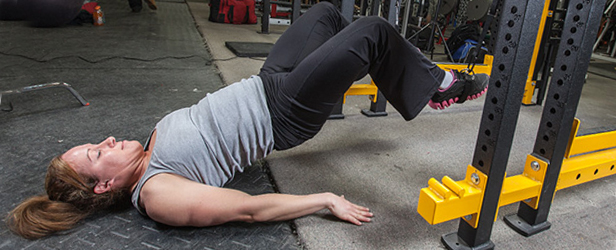
I have seen hundreds of high school and college lifting programs over the last 10 years. Ninety percent of them seem to consist of the usual blend of speed, strength, and power exercises. That same 90% also seem to lack some concepts that I feel are very necessary for the team sport athlete. Below are five things the average program is lacking.
1. Ankle Mobility
If you lack mobility in the ankle joint, then you are leaving yourself open to non-contact knee injuries. This is exactly why I am not a big fan of healthy athletes bracing and taping their ankles. In addition, improving your ankle mobility will make you a better squatter and deadlifter. At Soar, we start every warm-up with ankle mobilizations over the middle toe, big toe, and little toe. Keep your heel on the ground and push your knee towards the wall. It is so simple, but very few athletes do it.
2. Lateral Plyometrics
If you play any team sport, you are going to be moving in all directions, not just straight forward. Yet, the average high school lifting program consists only of vertical and horizontal power exercises such as broad jumps, box jumps, and power cleans. These are all great exercises, but what about creating power in the frontal plane? Aside from the benefits to your speed and power on the field, lateral plyometrics will help keep the ankles, knees, and hips healthy.
Here are a few examples of two- and one-leg lateral plyometrics that we often use at Soar:
- Lateral quick feet plyos within an agility ladder
- Lateral bounds
- Lateral hurdle jump and hops
- Lateral broad jumps
3. Bent Leg Hip Extension Exercises
The glute is the king muscle when it comes to speed, but very few programs utilize exercises that specifically target it. Glute ham raises and RDL variations are great for the hamstrings, but they do not recruit the glutes in the same manner that a lot of bent leg hip extension exercises do. The best thing about them: all you need is a bench or a box to do them.
Here are a few examples of Bent Leg Hip Extension exercises we use at Soar:
- Back on Bench (BOB) one- and two-leg hip extensions. We weight single-leg ones with chains and two-leg ones with a barbell.
- Forward sled marches
- Half get-ups with a hip lift
- BOB glute bridges
In addition to the speed benefits you will get from adding these into your program, they will also go a long way towards preventing nagging hamstring injuries, back pain, and knee pain. The average high school kid who has knee pain or “glute amnesia” will benefit greatly from a few sets per week of these exercises. (Consult Bret Contreras, aka “The Glute Guy,” for an in-depth look at glute training).
4. Weighted carries
A strong athlete has a strong grip, and weighted carries are one of the best ways to improve your grip strength. Don’t have farmers walking handles? Kettlebells, dumbbells, or anything heavy will work. The key is to mix up the kind of carries that you have your athletes do. At Soar, we have a “Weighted Carry of the Week.” We rotate through a variety of carries with heavy handles or kettlebells. Here is a list of carries we rotate through:
- Heavy carry: same weight in each arm
- Offset carry: load is heavier in one arm
- Suitcase carry: weight is only in one arm
- Heartbeat carry: hold a kettlebell at chest height and press is out as you walk (Credit for this goes to Dan John!)
- Bottoms up carry: hold the kettlebell upside down and keep elbows bent at 90 degrees
- Suicide walks: any of the above carries but changing directions (like a basketball suicide)
5. Rotational Training
The term “functional training” has become a fire starter for many arguments in online forums. Some trainers have taken it way too far by having their clients do everything with a wobble board. On the other hand, there are also those coaches who think that anything that doesn’t involve a bar is for pussies. I would say I fall somewhere in between. This is where diagonal chops come in. A lot of sports are played in the transverse plane, and this is why rotational training is ‘functional” for most team sport athletes. The problem is that most coaches fail to understand that rotational training is NOT explosive twisting of the lumbar spine. It is learning how to rotate the hips and upper back while the center of the body stays relatively stable.
A sound rotational training progression begins with learning how to resist rotation. We start all of our athletes with chops in a half kneeling position, where the goal is to brace the core and resist the forces that the cable is putting on them. We then progress to rotational med ball throws and standing chops, where the hips and upper back produce the power. Two sets of 10 reps in each direction one to two times a week serves as sufficient rotational training in my experience.











-Matt